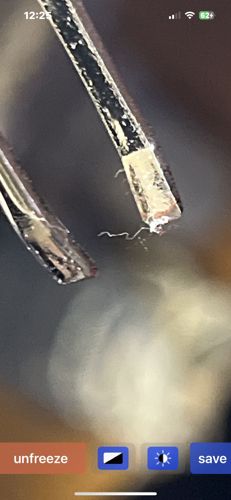Hairworm
Scientific Name: Nematomorpha
Order & Family: Nematomorpha (Phylum)
Size: Typically 10-50 cm, but can reach up to 2 meters in length; very thin, usually 0.5-3 mm in diameter.

Natural Habitat
Adults are free-living in freshwater or marine environments. Larvae are parasitic inside arthropods (e.g., crickets, grasshoppers, beetles, mantids, cockroaches, crustaceans).
Diet & Feeding
Adult hairworms do not feed. Their parasitic larval stage absorbs nutrients directly from the host's body.
Behavior Patterns
Adults are free-living, often found in water (streams, ponds, puddles, even pet water bowls). They are known for their ability to manipulate the behavior of their insect hosts, causing them to seek out water (a 'death dive') to allow the adult worm to emerge and reproduce. Their life cycle involves laying eggs in water, larvae infecting a host, developing inside the host, and then emerging when the host is near water.
Risks & Benefits
Generally considered harmless to humans, as they are not parasitic to vertebrates. They can be beneficial in regulating insect populations, particularly those of common pests like crickets and grasshoppers. Seeing them in human environments (e.g., pet water bowls) is usually due to an infected insect dying nearby and the worm emerging.
Identified on: 9/17/2025